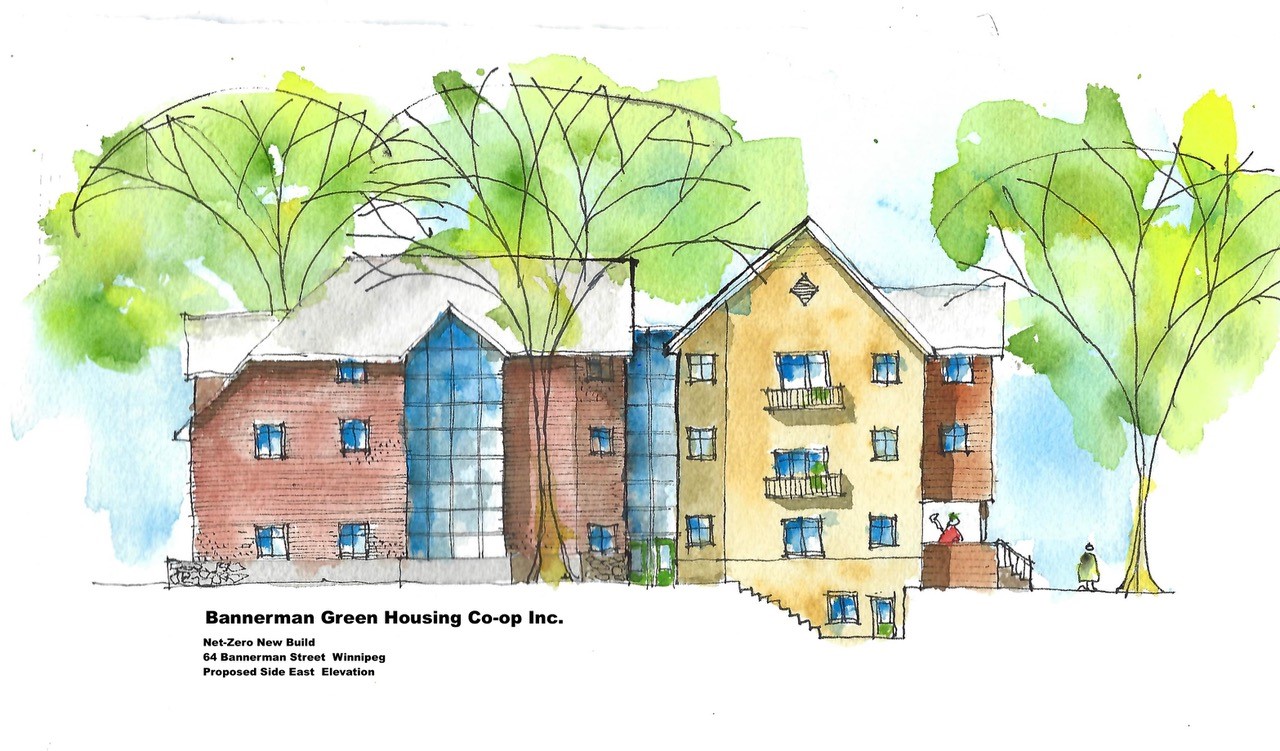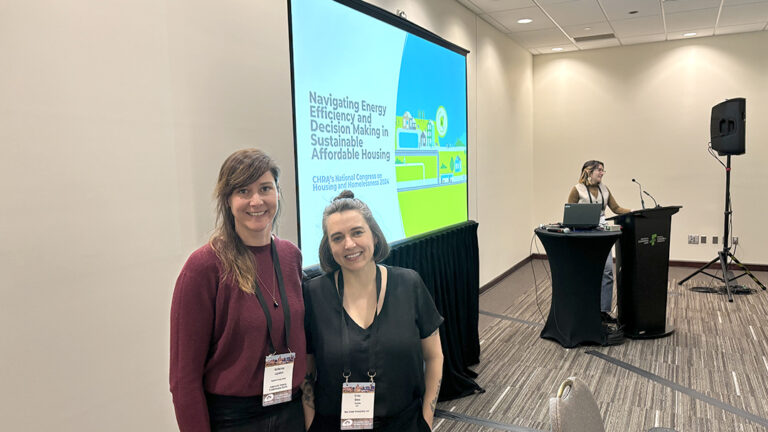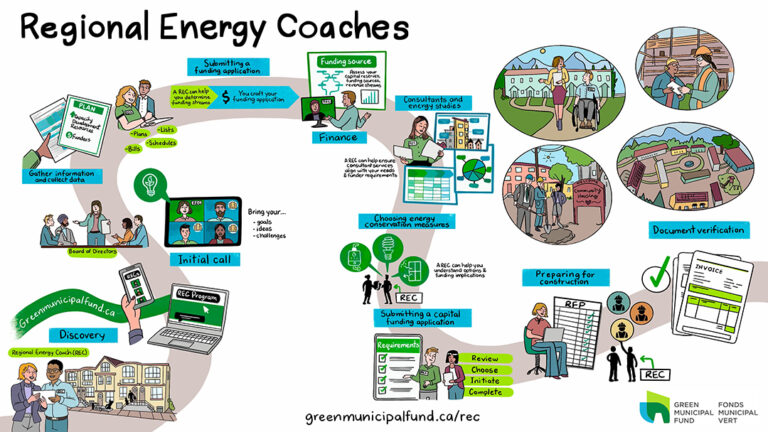Afraid they could be pushed out of their changing neighbourhood, a group of neighbours organized and formed their own cooperative. A shared passion for environmentally friendly design lay the groundwork for a net-zero, and socially inclusive, housing ecosystem.
When a revitalization program began in the historically working-class neighbourhood of St. John’s in Winnipeg, Man., being squeezed out became a real concern for long-time residents. So much so that they started the Bannerman Green Housing Co-op. Their shared vision of sustainably built housing, one that is also socially inclusive through physical and economic accessibility, lay the groundwork for the work to be done.
“Until you have land, you have nothing,” says Dudley Thompson, chair of the Bannerman Green Housing Co-op. “About two years ago we came across a piece of vacant land. It’s the site of an original farmhouse, 10,000 square feet, it’s not huge, but it’s zoned for twelve units. So that became the starting point for the housing co-operative.”
Thompson, a retired architect who has designed several housing cooperatives, purchased the land on behalf of the co-op.
“A group of us in the local community got together and formalized a housing co-op about a year ago. In the interim, we’ve set up a board of directors and various committees and have worked from there.”
Twelve units, as permitted by zoning, however, was not enough to form a co-op, so the group investigated the possibility of a scattered site housing cooperative—i.e., not all units would be located at the same address—raising the total to up to 30 units.
Energy efficiency in real time
What makes the project particularly unique, however, is its onus on sustainability: the Bannerman wants to showcase extremely efficient, environmentally friendly design. And the goal is net-zero.
Put simply, a net-zero house produces as much energy as it consumes. The premise is that reducing carbon emissions—although a start—is not enough to fight climate change. The basis of any net-zero home is to build tight and ventilate right.
“A net-zero home basically starts with reducing the amount of energy that you will need,” explains Thompson. “So, the first objective is to reduce the energy demand to as close to zero thereby reducing the need for heat or the need for electricity. Once you have significantly reduced demand, then you can supply small and affordable amounts of renewable geothermal or solar to provide the base energy.”
The current best practice is the Passive House standard, one of the pioneering concepts for building low-energy homes.
The concept originated in Saskatchewan. In the 1970s, in response to increasing high oil prices, the province tasked the Saskatchewan Research Council to design and build a solar house. The research team soon realized that storing the energy to heat a standard home was extremely wasteful, so they instead sought to reduce the home’s overall demand for energy through smarter design.
Although the idea didn’t take off in Saskatchewan, it inspired the work of Bo Adamson and Wolfgang Feist, co-originators of the Passive House concept. Feist went on to establish the Passivhaus Institute in Darmstadt, Germany, in 1996 and it has since become the green building-industry standard.
“It’s not rocket science. It’s a methodology to increase the insulation in your walls [and] to decrease the heat loss from the building. So, you seal the building like a cocoon,” explains Thompson.
The co-op aspires to get all major sustainable building certifications—LEED, Passive Housing, Net-Zero and the Living Building Challenge—and become a replicable prototype of a functional, sustainable housing ecosystem.
“We want other people to follow this because there is nothing [like it] in this city right now, and very little around the country, other than in Vancouver and Toronto areas,” says Thompson.
And, Thompson adds, this is where metrics—or a quantitative way to showcase the energy efficiency in real time—come into play.
“We want to make sure we have a building that can be certifiable, to have a third party to assess the metrics so that we can say with confidence that ‘this is where we’re at.’ The third-party certifications will track the amount of energy and water we’re using, and how it [evolves over time].”
Net-zero economics
Funding for the Bannerman co-op is a blend of subsidies that includes money from market renters, the Canada Mortgage and Housing Corporation, and the Federation of Canadian Municipalities.
“In Manitoba right now, we have a very hands-off provincial and municipal governments, so there’s no money for housing, period,” Thompson says. “Normally, as in other cities, Winnipeg would provide some start-up funding for housing to match funders like the Federation of Canadian Municipalities. However, this is not the case. So, if you’re a non-profit housing provider, the question becomes how do you fund initial start-up costs?”
After investigating possible sources of funding, the members applied to the Community Housing Transformation Centre’s Sector Transformation Fund—Local Project, and they were awarded $75,000.
Thanks to the Centre’s funding, they can now build a business case, cover soft costs and continue community engagement. What’s more, the grant enables the co-op to seek matching funding with the FCM.
“You know, if your funding agency wasn’t there, I’m not quite sure how we would do this,” admits Thompson.
A beacon of inspiration for the rental market?
In an industry that is often all about the bottom line, the evangelism of green building can be a tough sell. But Thompson says that even though the economic lens shouldn’t be the only reason why we build net-zero homes, there is a case to be made to encourage developers to embrace, or at least get curious about, net-zero buildings.
“There is a case to be made for net-zero operations of apartments because the [owner] gains the reduction in energy costs and the water costs. And [say]—if you look at the long term—over 50 years, there can be large economic returns for a housing provider.”



